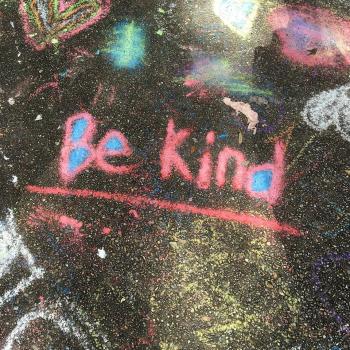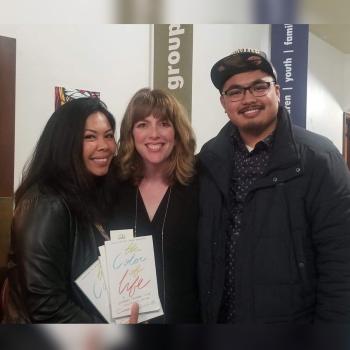A lot of the work I do is around equipping parents and caregivers to talk to their children about race. Whether these conversations happen on a stage, in a school cafeteria or at a private backyard event, engaging in the conversation “early, often and honestly” is key – for all of us and for all of our children. This is part 2 of a 5-part series based on a series of workshops.
—

Just as the first post reminded us to engage now, today’s post digs begins to dig into the actual work. Perhaps like you, I’ve wondered how to bring up conversations of justice, race and privilege, without doing more harm than good. Sometimes, because I haven’t wanted to get it wrong, I’ve failed to try entirely.
But sometimes, I’ve needed a place to start, a way in which I can enter in as I am and as we are, so I can successfully talk about race with my kids.
Do you ever feel the same way?
Well, the good news is that for most of us, the answer is right in front of us: we can begin to engage in conversations of race with our kids through the books we read and the television shows we watch.
Take books, for example. What do you notice about the books on your child’s bookshelf? For me, a moment of reckoning happened a couple of years ago when, upon reading to my boys, I realized that all of the characters in the children’s storybook bible looked more like me than like them – let alone like a marginalized, brown-skinned Jewish God-Man who graced the earth two thousand years ago.
In fact, I write about it in my book, The Color of Life:
When every single book we read stars someone who looks more like me than like my sons, something else is communicated: This is who rescues the bad guy. This is who dons the superhero cape. This is who wins in the end. When my sons see only a single skin color presented in the pages of a book, not only do they not see themselves but they digest a normalcy of supposed-to’s, of who they are supposed to be and what they are supposed to look like. And in a Bible, of all things, when a message of whiteness replaces “the life and teachings of a dark-skinned first-century Jewish rabbi living under Roman occupation in Palestine,” I am left with no choice but to wish the heartiest of farewells to this woefully defined image of the Christ.
As always, we start by noticing …but then we further enter in by asking questions that encourage our children to notice, too.
For instance, if all of the superheroes in a featured in a comic book story have light skin, ask your child, What do you notice about the superheroes in this book? What do you think this says about who gets to be a superhero? Talk about what you see and don’t see with your child, and then, make changes accordingly.
Buy, borrow and read books that feature children of every skin tone. Support buying books written by authors of every skin tone. (Need a place to start? Check out this list of 31 diverse children’s books). This matters not just for kids of color, so that they might see themselves in the pages of books, but it matters for white kids too – if nothing else, so they might realize that theirs is not the only way of living and operating in this world.
But I’ve got to warn you: a funny thing happens along the way. Just as you start to notice who is and isn’t on your child’s bookshelf, you’ll probably start to notice who is and isn’t on your bookshelf. And then the cycle starts all over again: you notice. You ask questions. You make changes. You decolonize your bookshelf, as my friend Myisha would say, one hardbound copy at a time.
The same, of course, goes for the television shows we watch.
Although racial representation is certainly growing in the media, we still have a long way to go – but as parents, we can enter into the viewing experience together.
So, here’s an idea: Instead of plopping your child down in front of the television to watch a show (because I, of all people, get it – Mama needs a break), intentionally sit down and watch an episode with him or her. Pause a couple of times throughout the show and talk to your child about what you notice and see.
Got a preschooler? Watch Sesame Street. Got a five-year old? Watch Dora and Friends. Got a Big Kid? Watch Raven’s Home.
Got a tween or teenager? Sit down and watch Mixed-ish or Black-ish, two of my favorite shows geared toward families, together.
The bottom line is that we learn and grow together, and sometimes this happens best with a bowl of popcorn and side-by-side snuggles on the couch together. Also, if you’re looking for a resource of shows to watch with your child, whatever their age, this website is a great place to start!
I can’t wait to hear about engaging with your children changes you as well.
—
So, what else would you add? How has reading diverse literature or watching diverse television changed you AND your children?
*Post contains Amazon Affiliate links












